
ダイヤモンドの宝石:歴史、意味、価値など
 ダイヤモンドは、宝石の王様として知られる、輝かしく輝かしい炭素鉱物です。地球上で最も硬い鉱物の一つであるダイヤモンドの構造と世界的な威信は、事実上破られることがありません。
ダイヤモンドは、宝石の王様として知られる、輝かしく輝かしい炭素鉱物です。地球上で最も硬い鉱物の一つであるダイヤモンドの構造と世界的な威信は、事実上破られることがありません。
すべての宝石のおよそ 98% は半貴石とみなされますが、ダイヤモンドは、 ルビー、 サファイア、 エメラルドとともに、 貴石リストに挙げられる 4 つの宝石の 1 つです。
ダイヤモンドは地球だけじゃないってご存知でしたか?50光年離れた「ルーシー」という星には、実は100兆兆兆カラットのダイヤモンドがあるんです!
地球上では、ダイヤモンドは世界中で愛されています。北米だけでも、ダイヤモンドはアメリカ合衆国アーカンソー州とカナダのノースウェスト準州の公式宝石となっています。
ダイヤモンドがなぜこれほど愛されるのか?今日はその疑問にお答えします!ほぼすべての婚約指輪に見られる、紛れもない輝き以外にも、ダイヤモンドには愛すべき点がたくさんあります!
しかし、ダイヤモンドに関する興味深い情報に入る前に、基礎知識としてダイヤモンドとは何かというところから始めましょう。
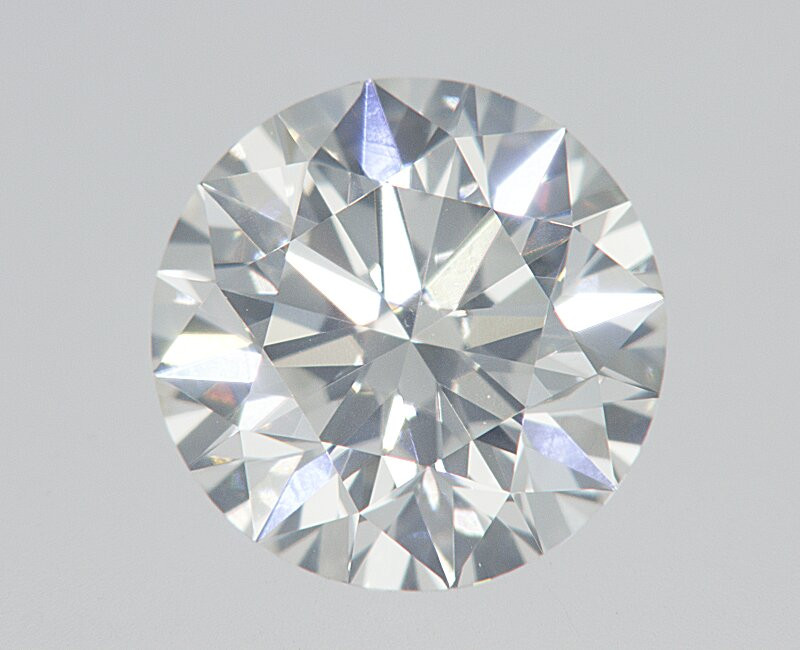
ダイヤモンドについて
宝石リストの中で、ダイヤモンドは独自の地位を築いているように見えますが、ダイヤモンドは宝石なのでしょうか?もちろんです!実際、ダイヤモンドは多くの人にとって幸運の宝石なのです!
4月生まれの方、おめでとうございます!ダイヤモンドは伝統的な4月の誕生石です。夏生まれの方も、8月の神秘的な誕生石であるダイヤモンドにぜひご注目ください!
占星術愛好家の皆様、ダイヤモンドは牡羊座の星座石です!同じく火の星座である獅子座には、ダイヤモンドのスターストーンが贈られます。ダイヤモンドの燃えるような輝きを考えると、この2つはまさに天に召された組み合わせと言えるでしょう!
素敵なペアリングといえば、ダイヤモンドは結婚10周年、60周年、そして75周年の記念日にふさわしい伝統的な宝石です!すでにダイヤモンドの指輪をお持ちの方もいらっしゃるかもしれませんが、お揃いのダイヤモンドのネックレスやイヤリングでお祝いするのはいかがでしょうか?ダイヤモンドほど愛を象徴するものはありません。何と言っても、ダイヤモンドは「永遠」なのですから!
鉱物の特性
ダイヤモンドの物理的特性について言えば、これらの宝石は驚異的な耐久性で知られています。 モース硬度10のダイヤモンドは、世界で最も硬い宝石です。
かつて科学者たちはダイヤモンドが最も硬い天然物質であると信じていましたが、2019年現在、ウルツ鉱型窒化ホウ素とロンズデーライトという2つの物質がダイヤモンドを上回りました。これらに加え、ダイヤモンドは他のどの天然物質よりも58倍も硬いのです。
しかし、ダイヤモンドは岩石ですか、それとも鉱物ですか?ダイヤモンドは炭素鉱物です!
化学的には、ダイヤモンドは炭素の同素体です。結晶構造は、2つのピラミッドが連結したような形状をしています。
ダイヤモンドの約30%は、適切な条件下で蛍光を発します。蛍光の輝きはほぼ常に青色ですが、他の色合いが現れることもあります。
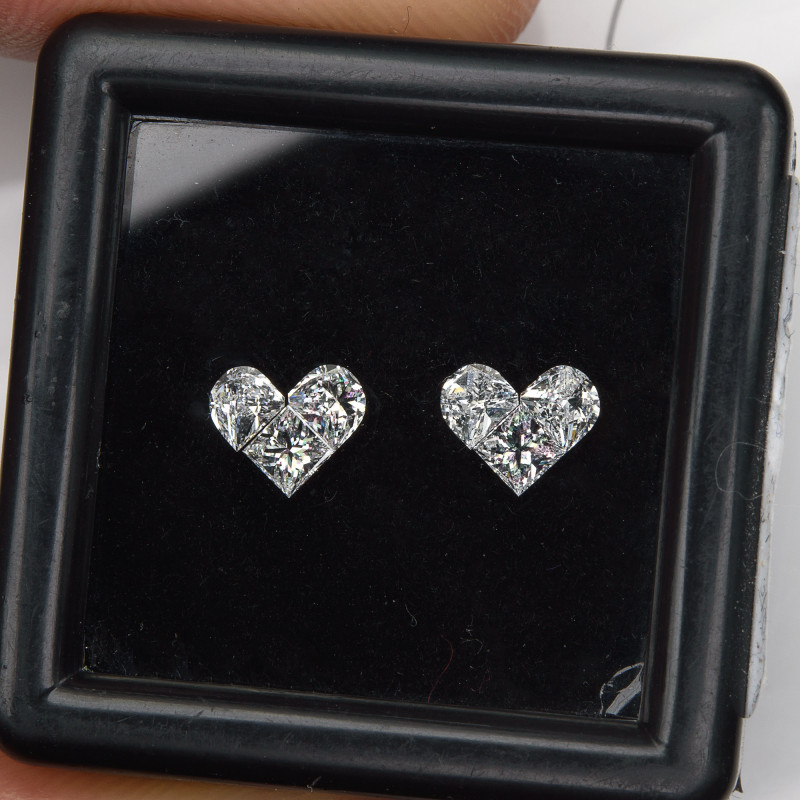
ダイヤモンドの種類
「ダイヤモンド」と聞くと、おそらくホワイトダイヤモンドを思い浮かべるでしょう。ホワイトダイヤモンドは無色透明で、一般的に「天然ダイヤモンド」と同義です。
ダイヤモンドには数十種類ありますが、主にタイプIとタイプIIに分類されます。ダイヤモンドの約95%はタイプIで、窒素不純物を含み蛍光を発します。タイプIIのダイヤモンドには窒素は含まれません。
サブタイプを分類してみましょう:
タイプIaダイヤモンド。結晶全体に窒素のクラスターが存在するため、黄色がかった色をしています。タイプ1aAは窒素クラスターが2つ存在するダイヤモンドで、タイプ1aBは窒素原子が4つ存在するダイヤモンドです。
タイプIIaダイヤモンド。最も希少かつ価値の高いダイヤモンドタイプで、ダイヤモンド全体の1%を占め、窒素含有量が極めて少ないか全くないため、素晴らしい輝きを放ちます。
タイプ Ib ダイヤモンド。窒素クラスターが散在し、黄色、オレンジ色、茶色、黄緑色の強い色彩を呈する珍しいダイヤモンド(0.1% 未満)。
タイプIIbダイヤモンド。窒素はほとんどまたは全く含まれず、ホウ素を含むため導電性があります。
紛らわしい用語であるディアマンテ ダイヤモンドについて触れておく必要があります。これはダイヤモンドではなく、ダイヤモンドに似た人工宝石 (ラインストーンなど) です。本題に戻りましょう。
ダイヤモンドの仕様と特徴
色: 無色。黄色、オレンジ、赤、青、緑、紫、茶色の色合いになる場合があります。
結晶構造:立方晶(等軸晶)
光沢:アダマンティン
透明性:透明
屈折率:2.42
密度:3.51~3.53
劈開:オン[111]; 4方向とも完全
骨折:不均一/不規則
縞模様:無色
発光:特定の条件下では蛍光を発する。ほとんどの場合青色だが、まれに白色、黄色、緑色、赤色となる。
ダイヤモンドの宝石学はさておき、ダイヤモンドは何を意味するのでしょうか?ダイヤモンドには、見た目以上の意味があるのです!
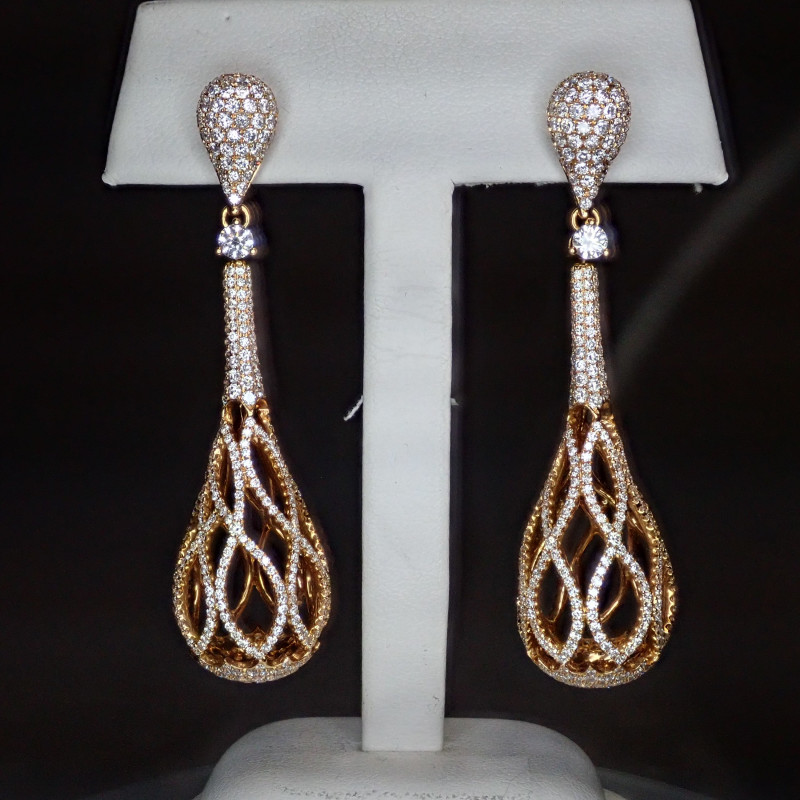
ダイヤモンドの意味
「ダイヤモンド」は古代ギリシャ語で「無敵」を意味する「アダマス」に由来します。この言葉は、石の物理的な強さを表すだけでなく、ダイヤモンドが死から守ってくれるという神話にも関連しています。おそらく、このダイヤモンドの意味は、石の卓越した耐久性から来ており、それは守護を意味していたのかもしれません。
古代において、ダイヤモンドは精神的・哲学的な観点から考察されてきました。ローマの博物学者、大プリニウスは1世紀にダイヤモンドについて次のように述べています。
「ダイヤモンドは宝石だけでなく、この世のあらゆるものの中で最も価値のあるものです。 」
古代インドは最初のダイヤモンドを誇り、それを伝承の中に組み入れました。サンスクリット語でダイヤモンドを意味する「ヴァジュラ」は「雷」を意味し、嵐の神インドラ神が雷を地上に送り、ダイヤモンドを作ったという地元の信仰に由来しています。
さらに、古代インドではダイヤモンドを宗教的な偶像に飾り、お守りとして用いていました。宗教と宝石学はしばしば交差しており、ヒンドゥー教の聖典『ガルーダ・プラーナ』にはダイヤモンドの品質と富や繁栄といった効能が記されています。
ダイヤモンドは何世紀にもわたって富と地位の象徴であり続けました。1400年代以前は、貴族と聖職者だけがダイヤモンドの宝石を身に着けることができました。
ダイヤモンドは永遠の絆、愛、そして忠誠を象徴します。精神的には、長寿、内面の美しさ、そして達成を象徴します。
では、ダイヤモンドはどのように使えるのでしょうか?
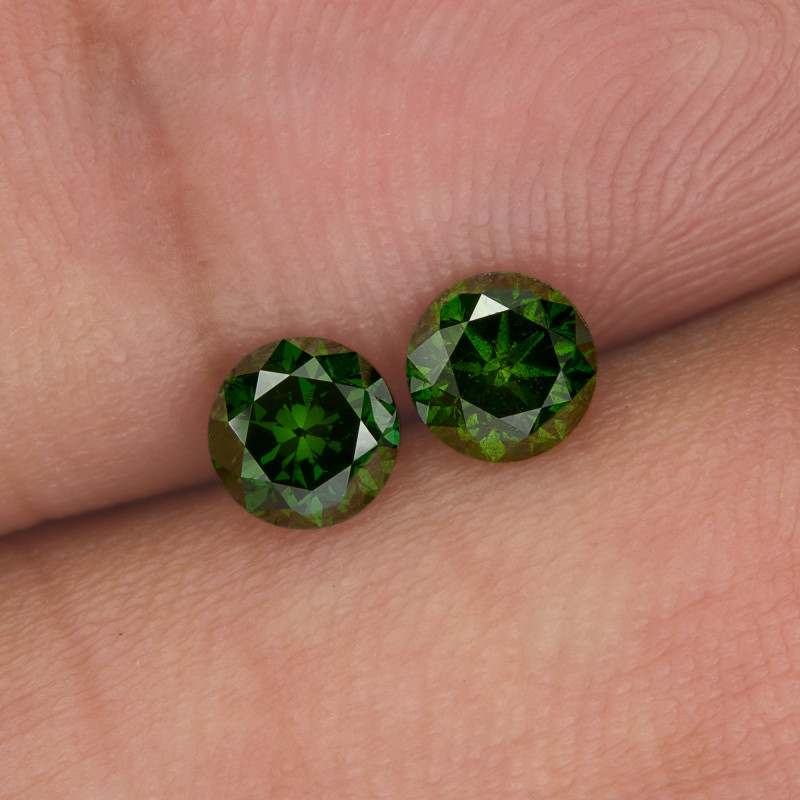
ダイヤモンドの治癒特性
他のヒーリングストーンと同様に、ダイヤモンドにはスピリチュアルな力があります。白い宝石であるダイヤモンドは、意識を高め、浄化し、増幅させるために用いられます。
この石の無敵の力は他のヒーリング効果にも及び、強さ、勇気、そして忍耐力をもたらすと言われています。ダイヤモンドの輝きは、明晰さと革新性を高めると言われています。
ダイヤモンドの特定の治癒特性についてはどうですか?
身体の治癒
ダイヤモンドは神経系に作用し、認知能力と感覚能力を向上させると言われています。さらに、ダイヤモンドは他の宝石の治癒効果を高める効果も期待できます。
感情的な癒し
感情面では、ダイヤモンドは心配や痛みといったネガティブな感情を浄化してくれます。そして、この浄化作用によって、ダイヤモンドは個人的な成長を促し、最高の自分へと繋がり、自分自身の力を発見させてくれます。
チャクラヒーリング
ダイヤモンドはクラウンチャクラに働きかけるのに最適です。このチャクラは肉体と魂が出会う場所であり、「宇宙への架け橋」と呼ばれています。
クラウンチャクラのバランスが崩れると、混乱や孤独感を感じやすくなります。ダイヤモンドはチャクラのバランスを整え、スピリチュアルな意識と繋がりを高めてくれます。
購入する前に、ダイヤモンドの品質に対する意識を高めておく必要があります。
ダイヤモンド宝石の特性:4C
天然ダイヤモンド、あるいは天然ダイヤモンドの真の価値とは何でしょうか?これは購入者にとっては馴染みのない情報かもしれませんが、専門家はダイヤモンドの価値を評価するために「4C」と呼ばれる信頼できる方法を用いています。
米国宝石学会(GIA)が制定したダイヤモンドの品質を表す4Cは、世界共通のダイヤモンド評価システムです。GIAのダイヤモンド評価システムは国際的に使用されており、消費者は客観的な品質評価としてGIAまたはIGS(国際宝石学会)が発行するダイヤモンド鑑定書を信頼しています。
測定は、色、カット、透明度、カラット重量で構成されます。

色
最高品質のダイヤモンドは無色です。GIAのカラースケールは、完全に無色のDから淡い黄色または茶色のZまでで、ほとんどのダイヤモンドはこの範囲に該当します。
ダイヤモンド石の色の等級付けには、石をマスター石セットと比較することが必要であり、各マスター石セットは DZ スケールの色を表します。
その他の天然カラーダイヤモンドの価値は、希少性によって決まります。レッドダイヤモンドが最も希少で、次いでブルーとピンクが続きます。しかし、ブルー蛍光はより一般的で、黄色の色合いを際立たせる可能性があります。ただし、高強度の蛍光はクラリティを低下させる可能性があります。

明瞭さ
クラリティとは、ダイヤモンドの目に見える内包物(内部)と外包物(外部)の程度を指します。内包物と外包物が少ないほど、価値が高くなります。
ダイヤモンドの一般的な内包物には、小さなダイヤモンドの破片や他の鉱物の痕跡が含まれます。最も一般的な欠陥は、へこみや傷です。
クラリティ評価では、サイズ、位置、数、コントラスト(レリーフ)に基づいてクラリティ特性を評価します。 クラリティ評価の 2 つの主な基準は、GIA と AGS(アメリカ宝石学会)によるものです。
GIA のクラリティ スケールには 11 段階のグレードがあり、Flawless (10 倍の拡大で内包物や傷が目立たない) から I3 (光沢と透明度に影響する内包物が簡単に見える) まであります。
最低と最高の間の透明度グレードは、通常、10 倍の拡大でのみ見える内包物を示します。

カット
ダイヤモンドのカットとは、石のファセットが光をどのように反射するかを指します。カットは、ダイヤモンドの3つの特性を高めるために非常に重要です。
輝き:反射した白色光
火:色のついた光の閃光
シンチレーション:きらめきと明暗の模様
カットグレードでは、完成した石の明るさ、深さ、特性を調べます (上記)。
カットグレードは、エクセレント、ベリーグッド、グッド、フェア、プアの5段階です。発掘されるダイヤモンドの90%はプアまたはフェアで、エクセレントはわずか0.1%です。上質なダイヤモンドがなぜこれほど高い評価を受けるのか、お分かりいただけたでしょうか?
カットは、完成した石の形を指すこともあります。ラウンドブリリアントカットが標準的なカットで、その他のカットは「ファンシーカット」に分類されます。
ラウンドブリリアントカットは、 最も輝きを放つダイヤモンドカットとして最も人気のある形状です。オーバルカット、 マーキスカット、ペアカットも素晴らしい輝きを放ち、 アッシャーカットとクッションカットは輝きをさらに高めます。

カラット重量
カラットはダイヤモンドの重量を測る際に用いられる単位で、0.2グラムに相当します。(カラットは別の計測単位であることに注意してください。)カラットは非常に正確で、小数点第1位まで計測されます。10分の1カラットでも価格が大きく変わることがあります。
カラット単価はサイズによって変動します。4カラットのダイヤモンド1個は、1カラットのダイヤモンド4個よりも高価になる可能性があります。さらに、カラット単価には他の品質要因も考慮されるため、4カラットのダイヤモンドは2カラットのダイヤモンドの2倍以上の価格になることもあります。
トリートメントと合成
ダイヤモンドにこれほど印象的な輝きと煌めきを与えるものは何でしょうか?それは、巧みに施されたカットによるものかもしれませんし、あるいは施された処理によるものかもしれません。ダイヤモンド処理、あるいはエンハンスメントは、石の外観を向上させることができます。一般的な処理には、フラクチャーフィリング、コーティング、レーザードリリング、高圧高温処理(HPHT)などがあります。
合成ダイヤモンド、またはラボグロウンダイヤモンドは、 モアッサナイトやホワイトトパーズのような類似ダイヤモンドとは異なり、天然ダイヤモンドと同じ化学的・物理的特性を持っています。合成ダイヤモンドは宝石として、または工業用途で製造されます。ほとんどは黄色で、高圧高温法(HPHT)または化学蒸着法(CVD)によって製造されます。
ダイヤモンドの宝石学的価値については既にご存知かと思いますが、その知覚価値を理解するには、タイムトラベルする必要があります。

ダイヤモンドの歴史
ダイヤモンドは100万分の1の希少価値を持つと言われていますが、 本当に希少なのでしょうか?巧妙なマーケティングが信じ込ませようとしているにもかかわらず、ダイヤモンドは地球上で最も豊富な宝石の一つです。ダイヤモンドの人気が急上昇したのはほんの数百年前ですが、何千年もの間、崇拝されてきました。
ダイヤモンド取引の変遷
ダイヤモンドの発見については議論がありますが、紀元前2500年から紀元前300年の間に起こったと考えられています。しかし、インドが最初のダイヤモンド産地として確固たる地位を築き、ダイヤモンドの利用の歴史が始まりました。
古代インドには銀行がなかったため、彼らは米粒のような単位に頼り、通貨はすべて身につけていました。富裕層は、安全に保管するために財産をダイヤモンドに換え始めました。これは、現代の金への投資に似ています。
インドは宝石学の多くの側面の先駆者であり、品質検査の規則(ラトナ・パリクシャ)を創設し、ダイヤモンドの専門家である新しい職業「マンダリン」を設立しました。
ダイヤモンドの輸出は、紀元前327年、アレクサンダー大王がインドに侵攻し、ダイヤモンドを地中海に持ち込んだ際に(武力によって)始まりました。中世になると、ヨーロッパもダイヤモンド市場に参入し、高騰した価格のために、ダイヤモンドは貴族やエリート層だけのものとなりました。
ブラジルは1700年代に主要なダイヤモンド産地となり、1世紀以上にわたりトップの座を維持しました。富と地位の移り変わりに伴い、かつてのエリート層向け市場は縮小しました。
1800年代までに、ダイヤモンド市場は海外に進出しました。1866年に南アフリカで豊富な鉱床が発見されたことが、現代のダイヤモンドブームの始まりとなり、特に婚約指輪への需要が高まりました。
ダイヤモンドの現代的認識
私たちの執着の源は、デビアス グループとマーケティング大手の NW エアーズという 2 つの企業にあります。
1870年頃から、二人は歴史上最も印象的なマーケティングキャンペーンの一つに協力し、「ダイヤモンドは永遠に」というスローガンを使って、プロポーズにはダイヤモンドの婚約指輪が不可欠であることを世間に納得させた。
1900年代を通して、新たな供給源が出現し、新たな売り手が参入したことで市場は多様化しました。さらに、ダイヤモンドに関する研究が進み、カッティング技術の向上、ひいてはダイヤモンドの美しさの向上につながりました。
近年、 紛争ダイヤモンド問題が明るみに出ました。これを受けて、各国は2003年にキンバリー・プロセスを制定し、ダイヤモンド産業の改革に取り組んできました。
記録的なダイヤモンド
ホープ ダイヤモンド: 約 46 カラットの世界最大のブルー ダイヤモンドであるホープ ダイヤモンドは、およそ 400 年前に遡り、呪われているという迷信があります。
カリナン・ダイヤモンド:1905年に南アフリカで発見されたカリナン・ダイヤモンドは、3,106カラットを誇る世界最大のダイヤモンド原石です。南アフリカの指導者たちは、イギリス国王エドワード7世の66歳の誕生日にこのダイヤモンドを贈りました。
ピンク レガシー: 2018 年現在、ピンク レガシーは 5,000 万ドルを超える価格でオークションに出品され、これまでに販売されたダイヤモンドの中で最も高額な世界記録を更新しました。
ご覧の通り、ダイヤモンドは何世紀にもわたって高い評価を得てきました。しかし、ダイヤモンドはどこから始まるのでしょうか?有機ダイヤモンドはどのように形成されるのでしょうか?

ダイヤモンドの起源と供給源
ダイヤモンドは地球のマントルの奥深く、地下約 100 マイルの場所で、華氏 1800 度近くの高圧と高温の下で形成されます。
数十億年をかけて、炭素原子はあらゆる方向にほぼ完璧に一致する強固で硬いパターンで結合します。これらの岩石は、火山活動によって噴き上げられ、水域やその他の環境変動によって移動することで地球の表面に到達します。
石は低温では立方体、高温では八面体となることがあります。また、近くにある他の鉱物がダイヤモンド原石の形状に影響を及ぼすこともあります。
世界中で採掘されるダイヤモンドのうち、宝石品質のものはわずか3分の1程度です。では、ダイヤモンドはどこで採掘されるのでしょうか?
採掘場所
最も生産性の高いダイヤモンド鉱山は、インドに始まり、歴史を通じて変化してきました。2020年現在、世界最大のダイヤモンド埋蔵量を保有しているのはロシアとボツワナであり、生産量ではロシアとオーストラリアが最大です。
その他の主要なダイヤモンドの産地は次のとおりです。
アンゴラ
ブラジル
カナダ
ガーナ
インド
ナミビア
シベリア
さて、ここまでダイヤモンドについていろいろと学んできましたが、なぜダイヤモンドはそんなに高価なのでしょうか?もちろん、ダイヤモンドの価格についても触れなければなりません!
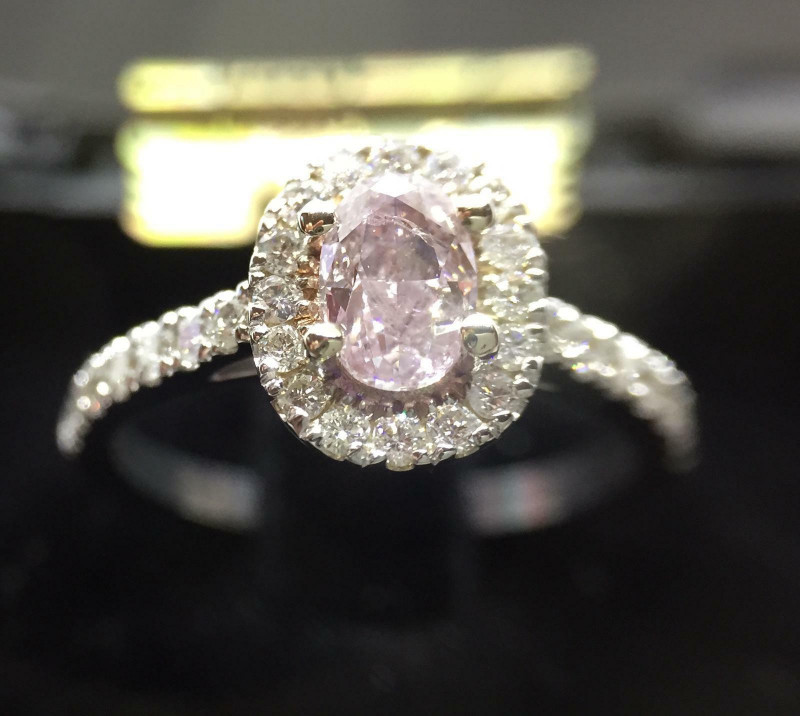
ダイヤモンドの価格と価値
ダイヤモンドの価格は、価値に影響を与える要因が非常に多いため、一概に価格を定めるのは難しいです。1カラットの無色のダイヤモンド2個でも、1カラットあたり2,000ドルから25,000ドルまで価格差が生じることがあります。
理論上、最高品質のダイヤモンドは、Dカラー、フローレスクラリティ、無蛍光性を備えたタイプIIaです。しかし、フローレスダイヤモンドは、次に高いグレードであるVVS1よりも40%も高価になる可能性があります。
美しく輝くダイヤモンドは、HまたはI以上のカラー、SI1以上のクラリティであれば問題ありません。サイズを選ぶ際は、カラット数が増えるとカラット単価も高くなることを覚えておいてください。
正確ではありませんが、適切な色と透明度を持つラウンドブリリアントカットダイヤモンドの推定価格の内訳は次のとおりです。
0.50カラット:1カラットあたり1,200~5,800ドル
0.75カラット:1カラットあたり1,300~9,000ドル
1カラット:1カラットあたり2,000~25,000ドル
3カラット:1カラットあたり7,000ドル~51,000ドル
5カラット:1カラットあたり9,000~68,000ドル
私たちの一番のアドバイスは、GIA または IGS から認定されていないダイヤモンドは絶対に購入しないことです。
ユニークで手頃な価格のダイヤモンドをお探しですか? チョコレートダイヤモンドやソルト&ペッパーダイヤモンドはいかがでしょうか?
ダイヤモンドのケアとメンテナンス
ダイヤモンドの耐久性には、靭性(壊れやすさ)、安定性(化学的/温度的変化)、硬度(モース硬度)の 3 つの側面があります。
ダイヤモンドは壊れないと思われがちですが、必ずしもそうではありません。正しい角度であれば、強いハンマーで叩けばダイヤモンドを砕くことができます。しかし、ジュエリーセッティングにおいて、このような角度でダイヤモンドを叩くことはまず考えられません。
最後に、安定性についてです。ダイヤモンドは概して、切削時の高熱やほぼあらゆる酸に耐えることができます。ただし、破損を防ぐため、急激な温度変化は避けてください。
掃除はどうですか?
石鹸、布、家庭用洗剤など、ダイヤモンドの洗浄方法はほぼすべて安全です。超音波洗浄機も安全ですが、石がセッティングから外れてしまう可能性があります。
ダイヤモンドのように明るく輝く準備はできました!
これで、ダイヤモンドに関する重要な情報はすべて理解できたようですね!こうした自然の奇跡的な偉業は、今もなお驚嘆すべきものであり、どんなことがあっても輝き続けることを思い出させてくれます。孔子の言葉にもあるように、「傷のあるダイヤモンドは、傷のない小石より価値がある」のです。
Gemstone Encyclopedia検索
最新記事
ヤシ象牙彫刻は、植物象牙とも呼ばれ、南米のヤシ科植物フィテレファス属のヤシの実から倫理的に採取された、象牙の天然代替品です。このガイドでヤシ象牙についてすべて学びましょう!
15th Jan 2026
レインボーラティスサンストーンは、様々な内包物によって3つのゴージャスな光学的効果を持つ長石の一種です。燃えるように鮮やかな色合いと格子模様が、コレクターにとって希少な宝石となっています。
12th Jan 2026
記事のカテゴリ
How To's is where you will find helpful articles from gem Rock Auctions on how to cut gemstones, select gemstones and buy gemstones.
9記事数

